Guerlain Chicherit is an ambitious guy, and so is his company Green Corp Konnection. For them, motorsport is their passion, their raison d’être, but you don’t need us to tell you that.
He’s competed in stage rallying, ran his own rallycross team in the world championship and done the Dakar Rally 11 times.
But now, his focus is on something far more important.
“My dream is to drive the Dakar while meeting my philosophy of a green vision for motorsport; I really can’t wait to drive this car in 2025,” Chicherit tells DirtFish.
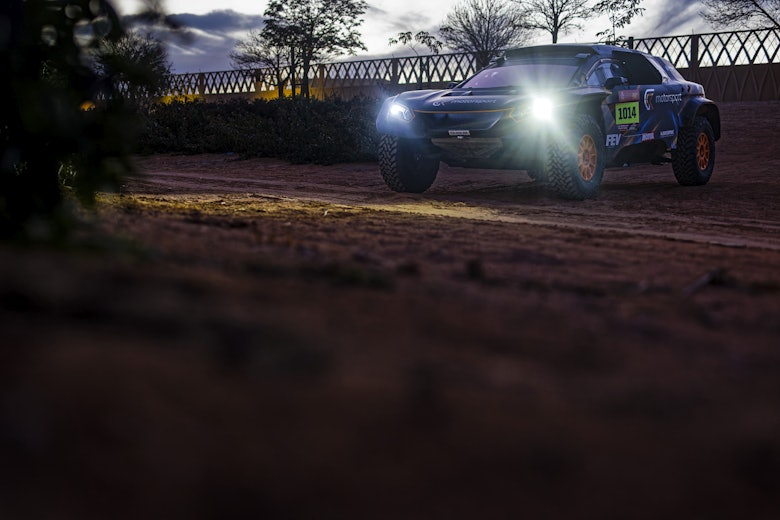
The car in question is GCK’s purpose-built, hydrogen-powered T1-Ultimate Dakar prototype, which will make its first public appearance in a special launch in mid-December, just before the Dakar itself.
Hydrogen has already made its mark on the Dakar earlier this year, with Gaussin running its H2 Racing Truck in Saudi Arabia.
And while some teams are pursuing the electric path – albeit charged and powered by internal combustion engines using conventional fuel – GCK says hydrogen is the way forward for rally raid technology.
Right now the car is quite big and heavy. But if you wanted to do this 10 years ago, it would be a truck!GCK team manager Sébastien Lesonneur on its hydrogen-powered car
“It’s not just that hydrogen is the cleanest solution,” says team manager Sébastien Lesonneur. “But that it is the only solution which fits the Dakar Rally requirements. There are around 500km [310 miles] of stages per day, but you have the opportunity to refuel at 250km [155 miles] without changing the race spirit, because the refuel stop is already there for the SSV and the motorbikes.
“That is why we have built in 250km of autonomy with this car, and hydrogen is the only solution at the moment to achieve that.”
Still in the build phase for the moment – the team is developing a brand-new chassis – the car had initially been scheduled to appear on selected stages of the 2023 Dakar. But Lesonneur explains that this has been shelved in favor of further testing in France, due to a lack of refueling stations to meet the requirements of the hydrogen car on-site.
“We’ve taken the first step in hydrogen technology by making our own fuel cell and this will be presented as part of a proper prototype which is under construction and will be available in a few weeks,” Lesonneur said.
“This car should have been presented on the Dakar [in 2023], driving and testing for everybody to see, but unfortunately the promoters and the FIA are not as ready as we are, in terms of refueling, which is also a big topic.
“We are in discussions with them, for sure they should be able to manage it but for the moment it is not 100% clear. So, we decided – with the ASO and FIA – that, for safety reasons, we will not be able to do it this year.”
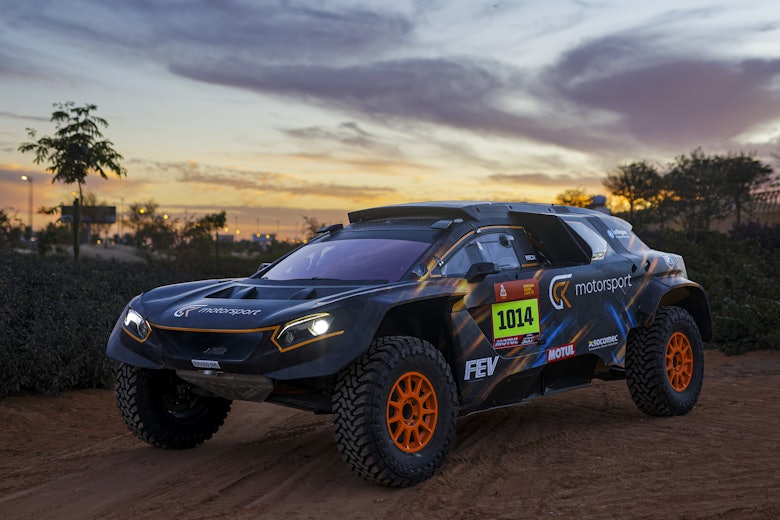
The team will instead focus its efforts on the initial launch of the H2 car and, by not heading out to Saudi Arabia for the Dakar, will be able to concentrate on the start of what Lesonneur hopes will be an extensive testing and development regime throughout 2023.
“We want to show people that the car is ready, and it is driving, before the Dakar starts,” Lesonneur says. “And this will also have a positive impact on our planning, because when you go to Dakar, the time you take to send the car and receive it back, it’s like two months.
“And as our plan is to have the car racing in 2024 with Philippe Croizon, we have a huge amount of testing to complete before then, so this will help everybody to make sure that we will be ready for 2024.”
The H2 is a tightly packed piece of kit, with a 300kW (roughly equivalent to 400bhp) motor located at the rear, next to an integrated fuel cell and a 60kWh battery. Onboard is a hydrogen tank that stores up to 700lb (around 30kg), rounding total curb weight up to 5070lbs (2300kg).
“People should not be afraid of the technology,” Lesonneur explains. “A hydrogen car is not any more dangerous than running a car with 500 liters of fuel behind you. It’s already on some of today’s road cars.
“The main complexity for us is not the technology; the fuel cell has existed for years and years already. It’s been improved and more compact than it was 10 or 15 years ago. The main issue for us is storage.
“If you want to do a lot of mileage in a hydrogen car, you need to have a lot of hydrogen, that’s for sure, which means you need 30kg. When you compare it against 500l of fuel, it’s not so much but 30kg of hydrogen, at 700lb makes the tank quite big.
“The technology today only allows us to make cylindrical tanks, which means packaging inside the car is really tricky. And for the moment, right now the car is quite big and heavy. But if you wanted to do this 10 years ago, it would be a truck!”
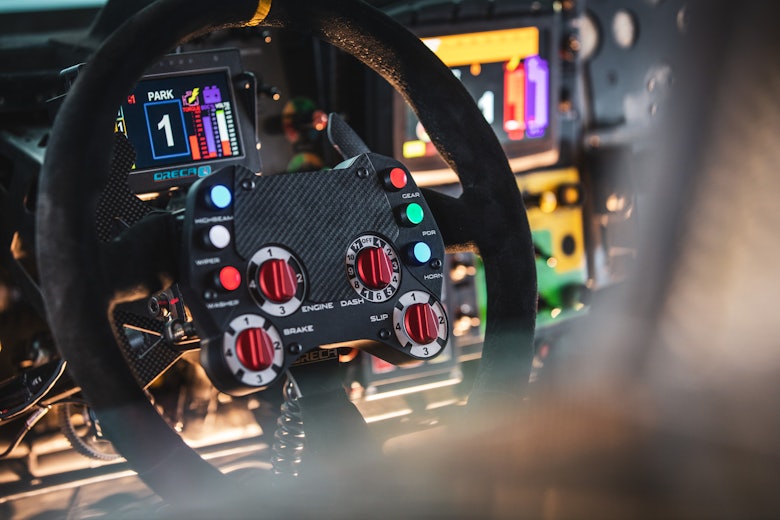
Lesonneur says the team will need to “accept” the additional weight of the car as technology improves in the coming years but does not believe the e-Blast H2 will be significantly heavier than the T1+ cars such as BRX’s Hunter or the Toyota GR Hilux DKR.
That’s all for the future, but for now, the focus is on giving the H2 its debut in 2024, a duty that will be carried out by Croizon. The renowned French adventurer became the first quadruple amputee to swim the English Channel in 2010 and also raced the Dakar in 2017, finishing 48th.
“The reason is quite simple,” says Lesonneur when asked by DirtFish why Croizon has been handed the responsibility of debuting the H2, instead of team owner Chicherit.
“Firstly, we have a story to tell with this first race for a hydrogen car and we think that the human story of Philippe and our story fits well.
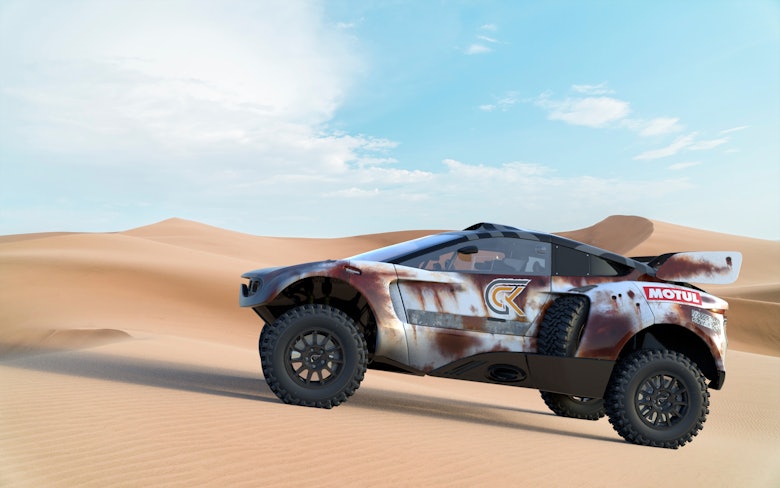
“Then, on the other hand, we wanted to maintain a full performance program with Guerlain which is as sustainable as we can be with bio-fuel, while also continuing our development of the proper T1U.”
Chicherit will instead contest the full World Rally Raid Championship next year plus the 2024 Dakar in a Prodrive-prepared Hunter T1+, an identical car to the one Sébastien Loeb drove to second place on the 2022 Dakar.
It’s a decision that Chicherit believes will give GCK much-needed experience from the sharp end of the field in order to further develop the H2 by the time he gets into the hydrogen car in 2025.
“Our aim is for the H2 to be able to compete at the front of the Dakar in two years’ time and to be able to win the Dakar,” said Chicherit.
“To be successful on the Dakar doesn’t just happen overnight, so this is why we cannot just wait until the H2 is ready to drive, we need to be racing near the front and that is why we have decided to drive the Hunter for the next two years.
“Prodrive is a really professional team, and I have good memories of working with them in the past; everything they do, they do it really well.
“And lastly, I believe that the new regulations have killed the buggy because the Dakar is not only about big cars, big drivers; it’s about private drivers and teams and sometimes fight for the stage win or top five.
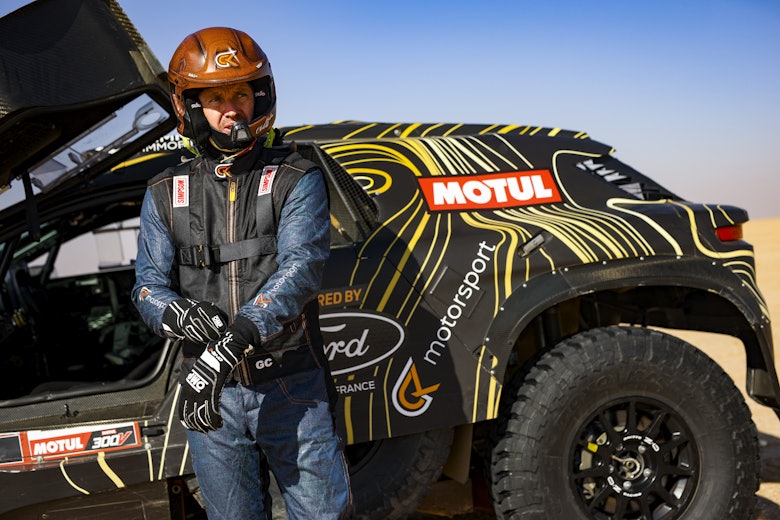
“But now with the T1+ regulations, the buggies are so far behind in terms of performance, there is no chance to win. I drove the Hunter and I immediately understood this, the difference is so much between the two cars. I know what I can and can’t do now, it’s a different world.”
Chicherit will have his first taste of the Hunter on next month’s Rallye du Maroc, the penultimate round of this season’s WRRC, before gearing himself up for another crack at the Dakar in the winter.
Although the road in front of GCK is long, there’s one rallying cry which is driving their motivation over the next 12 months.
“Our sport is changing; the world is changing,” says Lesonneur. “And if we don’t change, we will die. That’s the reality of today. We have to move, and we have to move quickly.”





